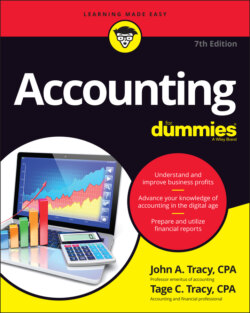Читать книгу Accounting For Dummies - John A. Tracy - Страница 71
Design truly useful reports for managers
ОглавлениеWe’ve seen too many off-the-mark accounting reports to managers — reports that are difficult to decipher and not very useful or relevant to the manager’s decision-making needs and control functions. These bad reports waste the manager’s time, one of the most serious offenses in management accounting.
Part of the problem lies with the managers themselves. As a business manager, have you told your accounting staff what you need to know, when you need it, and how to present it in the most efficient manner? When you stepped into your position, you probably didn’t hesitate to rearrange your office, and maybe you even insisted on hiring your own support staff. Yet you most likely lie down like a lapdog regarding your accounting reports. Maybe you assume that the reports have been done a certain way and that arguing for change is no use.
On the other hand, accountants bear a good share of the blame for poor management reports. Accountants should proactively study the manager’s decision-making responsibilities and provide the information that is most useful, presented in the most easily digestible manner. To a certain extent, this is what we mean when we say “reliable” (in the acronym CART). While financial information may be accurate, reliability speaks to the concept of producing and reporting financial information in a way that truly benefits a business manager and assists them in making informed business decisions. Don’t assume that accuracy automatically equates to reliability.
In designing the chart of accounts, the accountant should keep in mind the type of information needed for management reports. To exercise control, managers need much more detail than what’s reported on tax returns and external financial statements. And as we explain in Chapter 15, expenses should be regrouped into different categories for management decision-making analysis. A good chart of accounts looks to both the external and the internal (management) needs for information.
So what’s the answer for a manager who receives poorly formatted reports? Demand a report format that suits your needs! See Chapter 15 for a useful profit report model, and show it to your accountant as well.
